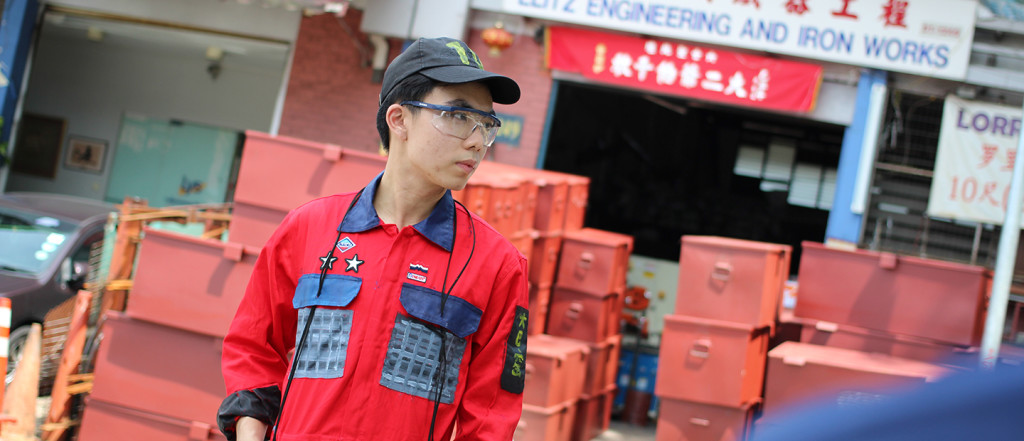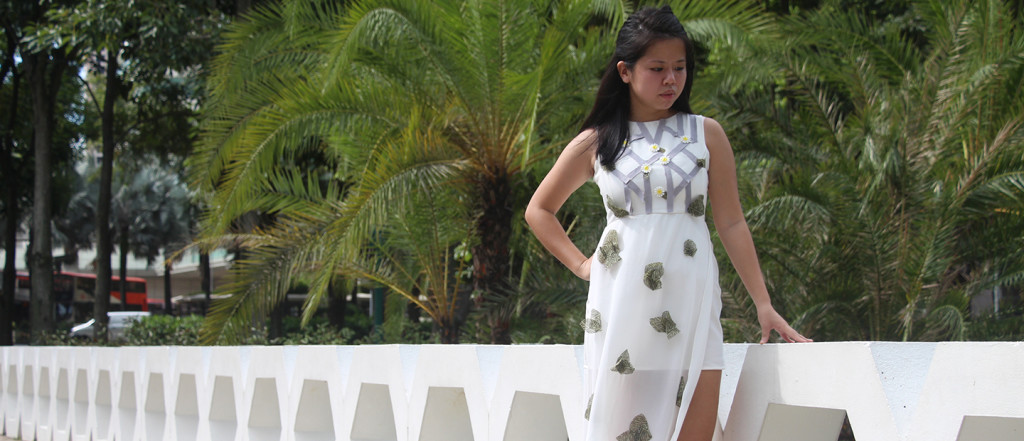Students explore urban spaces and sounds in Singapore neighbourhoods in Introduction to the Arts

For his final project, Ernest Tan (Class of 2019), together with his team, had to design and model locally-inspired outfits that distilled the character of Toa Payoh’s various land uses, as well as captured the embodied experience of the pedestrian in the city.
He was taking the Introduction to the Arts course jointly taught by Professor of Humanities (Art) & Director of Art, Mark Joyce and Associate Professor of Humanities (Music) Sarah Weiss, who is also Rector of Saga College.
A required module for students majoring in Art and Humanities, the course gives students the opportunity to engage with arts practice in several different media ranging from visual arts, music and architecture. At the same time, students are also exposed to broader questions about art and artistic expression such as “What is art and who is an artist?” as well the relationship between art, politics and ideology.
The theme for this semester’s class was “Urban Spaces, Urban Sounds”. For Rachel Lim (Class of 2018), a student in the Urban Studies major, the theme was what drew her to sign up for this course. “I was very interested to see how sounds and spaces of cities can be represented and manifested through various art forms and styles. We were given many chances to explore our potential, and the exploration of urban spaces through field trips and workshops that really helped cement my interest and understanding of the urban environment.”
One such workshop was facilitated by Sarah Wookey, a performance artist based in London who was invited for an Urbanisms Conference organised as part of this course. The conference comprised a series of papers presented by different artists and speakers who came from different fields, but all addressing the relationship between art and the urban environment. Sean Cham (Class of 2019) was one of the participants in this workshop.
“I particularly enjoyed the performance exercises we did with Sarah. She had us go through the ‘Body Weather Laboratory’ exercises, which helped us become more in tune with our body movements and understand how our body relates to the environment around us,” shared Sean.
Sean had earlier worked on an artwork titled “Yesteryears” which showcased 50 places that are historically or culturally significant to Singapore. “My project addressed conflicts in our urban space and issues such as conservation and collective memory, which resonated with this course. Conflicts in conservation and preservation of urban spaces have always been dear to me, from first-hand witnessing homes and places being torn down, along with the stories and memories,” he added.
For the course’s final project titled ‘Hole in the Map’, each group was given a map with a blacked-out area in Singapore. Students were expected to use the artistic process to understand the places within the hole, and present a response through art. The “hole” Ernest and his team was given was Toa Payoh and after much discussion, they settled on presenting a fashion showcase, titled ‘Made in Toa Payoh’.
“Each of us designed an outfit that characterised one land use in Toa Payoh – residential, culinary, religious, natural and industrial. Through the process of exploring, designing, creating, photographing and modeling these outfits, we engaged in a multidimensional study of Toa Payoh and therefore acquired a deeper understanding of the place. At the same time, we also became acquainted with artistic methodology as an alternative method of conducting research,” Ernest shared.

“My greatest takeaway from this course has been to acquire a new multisensory sensitivity to my surrounding. This has deeply enriched my ability to understand and articulate the experiences and meanings that I experience from day to day,” he added.
For Sean, the greatest takeaway from the class was the relationship between artists and different art forms. “Putting two different skillsets and mediums together to create an artwork can be both a creative and destructive process. It is the ability to negotiate the different forms and ideas that allow the creation of better artworks. I have had the chance to collaborate and work with my talented peers, and it was a very humbling and exciting process to witness the final projects that everyone has put up,” he reflected.





